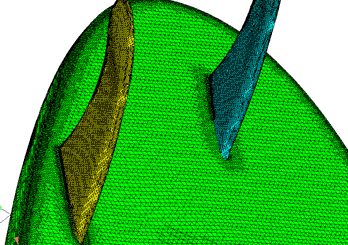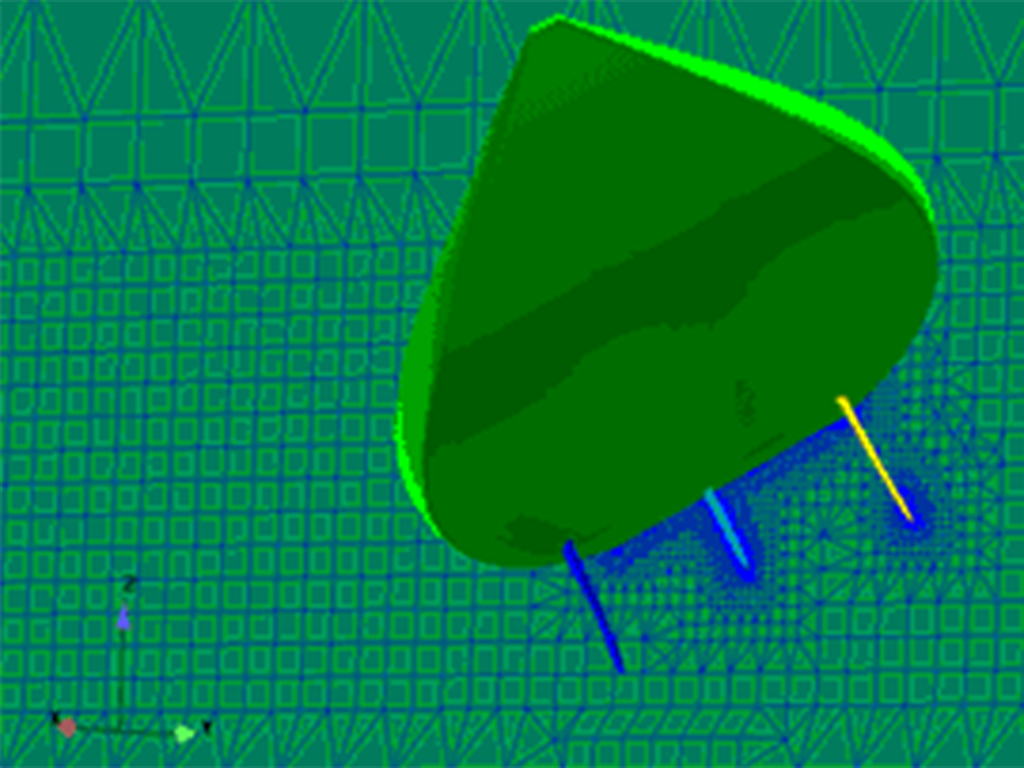Two surfers in Hoboken, NJ, have set out to make their mark on the sport of surfing, but their plan doesn't include riding the perfect wave. Instead, they've taken to the lab with another strategy in mind.
Dror Kodman and Brian Sweeney are master's degree candidates in the Product Architecture and Engineering (PAE) program, directed by Professor John Nastasi, at Stevens Institute of Technology. Working under the guidance of Dr. Len Imas, the two surfing scientists are jointly working on a master's thesis that aims to use computational fluid dynamics (CFD) analysis to match a surfer and surfing conditions to an optimal surfboard design.
Today, when a surfer wants a custom board, there is pretty much one viable strategy: visit a shaper who can craft a board based on his knowledge of local surfing conditions, as well as on the customer's weight and skill level. The catch is, the process is a true trial and error approach, with shapers working from experience and gut instinct, not hard science. The result? A skilled shaper can produce a well-designed board on a good day—but then there are bad days, off-the-mark hunches, and less-skilled shapers.
Kodman and Sweeney have no intentions of tossing out basic board shapes to completely redefine surfboard design. Their quest is to find a way to optimize specific board shapes for peak performance under specific surfing conditions.
They began this quest by defining the scope of their study with a few basic parameters and constraints. The real focus of their work, they decided, was to find effective ways to analyze a board shape quantitatively and systematically from a hydrodynamic perspective. For this reason, they somewhat simplified environmental factors, using only wave-slope and wave-speed data for the specific U.S. surfing locations used in their study. They also decided to focus their design analysis only on the needs of expert-level surfers.
The project began with a preliminary phase that matched a surfer's style to a specific type of board and specific locations in the U.S. The matrices of data that contained these initial matches were the basis for the second, far more sophisticated phase, which Kodman and Sweeney are currently carrying out with the use of CFD analysis.
Since there was little to no significant hydrodynamic research available on surfboard design, Kodman and Sweeney turned to boat hull design and analysis and related it to surfboards.
There are two main types of boats: displacement and planing vessels. The hull of a displacement vessel reaches well below the water's surface, and slices through the water as the vessel travels. The hull of a planing vessel, however, generally reaches a relatively short distance below the surface. As a planing vessel travels, it dynamically lifts, and essentially skims the surface of the water as it moves. This skimming effect is a result of lift, which is generated as the vessel's speed increases. Planing craft, in other words, rely more on dynamic lift than buoyancy to achieve the required sinkage and trim when in motion.
A surfboard is essentially a planing object. When surfing, it has a shallow reach below the water's surface and relies only minimally on buoyancy—just enough to float when at rest. Likewise, a surfboard calls on the force of lift to shuttle a surfer along a wave's surface.
By looking at surfboards as planing craft, the two students were able to focus their study on the effects of lift and drag, just as planing hull designers do.
Kodman and Sweeney conceive initial board designs and draw them in CAD before moving on to analysis.
“We're running different combinations of [surfboard] geometry and building a database from that—the database is basically our design space. We're comparing different combinations to determine which perform best,” says Kodman.
The variable elements of experimental surfboards have been limited to just a few distinct but important features. “The three design variables we're studying are the rocker—or the longitudinal curvature of the board from nose to tail—the rail configuration, and the bottom surface of the board—flat or contoured,” says Sweeney.
Once the theoretical models are drawn in CAD, they're fed into Harpoon to create an environment for the board so the team can study the effects of various forces and moments acting on a proposed board design. Harpoon, a joint effort of CEI and its UK distributor, Sharc, is a commercial mesh generation application. The software's ease of use was a real boon to the researchers focused on conceptual product analysis.
“Harpoon, compared to other mesh generation software, doesn't require a steep learning curve—maybe a week or two,” assessed Professor Imas. “If you've got someone who is interested in using CFD for prototyping but cannot afford to spend an entire year learning grid generation methodologies and software usage in-depth, Harpoon is basically an efficient way to go.”
For Kodman and Sweeney, Harpoon has made their project possible, given the time constraints of their master's program and their lack of experience with traditional meshing software and CFD in general.
“For guys like Dror and Brian, who basically want to use CFD as a tool to optimize a product and interrogate a parameter space, you don't want to be spending the majority of your available time learning mesh generation,” Imas points out.
Professor Imas estimated that the grid generation for the CAD drawings involved in this project would each probably take an expert two to three hours to complete manually (without scripting) by conventional methods. The master's students are able to complete a typical grid using Harpoon in about 20 minutes. Not only does that save them time with each proposed design, but they also saved themselves the months it would have taken to learn to use more traditional grid generation tools.
The time gained through Harpoon has made it possible to study and compare numerous designs and modifications, and more analysis is still underway as the team cranks out more designs and matches them to specific surfing conditions.
When asked when the project, with its seemingly infinite number of design combinations, would reach completion, Kodman and Sweeny quipped, “At graduation!” The researchers' good sense of humor, however, shouldn't be mistaken for a lack of seriousness. Like true entrepreneurs, they've begun researching the surfboard market and are investigating exactly how they can put their findings to work in the business world. But first things first, right now they're committed to completing their thesis project.
With their diplomas in hand, maybe they'll at least take a little pause at the shore to test out a prototype or two before taking on the business angle of their research.

Surface mesh on a surfboard design

A cut through the volume mesh surrounding the surfboard design